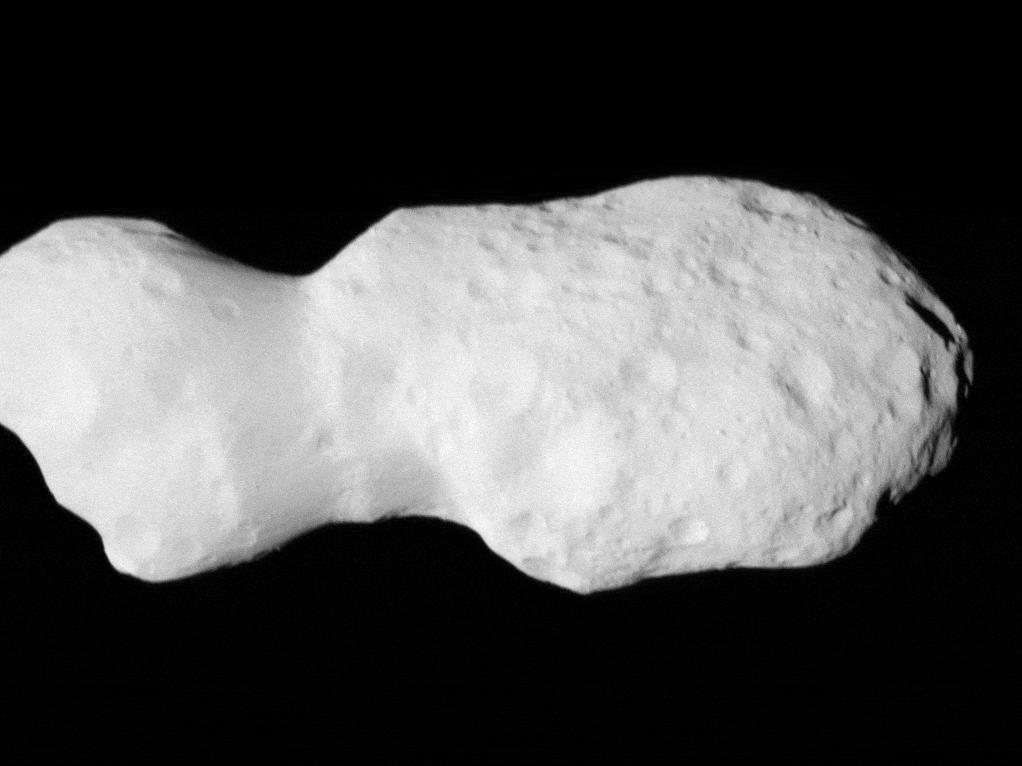NASA’s Lucy spacecraft has encountered its second official asteroid, and once again, the object has defied expectations. The asteroid in question, Donaldjohanson, was visited by the mission on April 20, 2025. It flew approximately 960 kilometers (600 miles) from the space rock, revealing interesting insights into its properties.
Donaldjohanson has a weird shape, a bit like a potato. It is estimated to be about 8 kilometers (5 miles) long and 3.5 kilometers (2 miles) across at its widest point. The images that have currently been downloaded from the spacecraft show that it doesn’t fit in the camera’s view; scientists were not expecting the asteroid to be quite as large as it is.
This was Lucy’s second official target, and similar to the first, the Donaldjohanson was not one of its main scientific targets – just an asteroid that was on the way. And, just like with the first target, the mission team has been surprised at what they saw once the spacecraft got this close to an asteroid.
The first target was a 3-in-1, as asteroid Dinkinesh was revealed to have a moon called Selam made of two asteroids stuck together. Donaldjohanson is going to be very intriguing indeed, especially since it formed in a collision “just” 150 million years ago.

Lucy going from 1,600 to 1,100 kilometers (1,000 to 660 miles) away from Donaldjohanson during the flyby.
Image Credit: NASA/Goddard/SwRI/Johns Hopkins APL
“Asteroid Donaldjohanson has strikingly complicated geology,” Hal Levison, principal investigator for Lucy at Southwest Research Institute, Boulder, Colorado, said in a statement. “As we study the complex structures in detail, they will reveal important information about the building blocks and collisional processes that formed the planets in our Solar System.”
The mission is named after the Australopithecus fossil Lucy. The asteroids it is set to visit are the remains of what the Solar System was like billions of years ago. They are the pieces from which planets formed so, as Lucy the fossil has helped scientists to better understand human evolution, understanding these pieces is understanding the Solar System’s past.
“[S]he’s become sort of the benchmark… I think that even more than [being just a skeleton], people recognize this discovery as an individual,” Donald Johanson, the discoverer of Lucy, told IFLScience in November 2024, the 50th anniversary of the discovery.
Asteroid Donaldjohanson is named after him, while Dinkinesh is the Ethiopian name for the Lucy fossil – it means “you are wonderful”. Selam is the name of another Australopithecus fossil, and it means “peace”.
Lucy’s next target is one of Jupiter’s Trojan asteroids, Eurybates, in August 2027. It will then visit multiple objects, over several months, before a trip back to Earth for a gravitational assist towards its last target on the other side of Jupiter.
“These early images of Donaldjohanson are again showing the tremendous capabilities of the Lucy spacecraft as an engine of discovery,” said Tom Statler, program scientist for the Lucy mission at NASA Headquarters in Washington. “The potential to really open a new window into the history of our solar system when Lucy gets to the Trojan asteroids is immense.”
Source Link: NASA’s Lucy Spacecraft Just Met Its Second Target, Asteroid Donaldjohanson – And It’s Defied Scientists' Expectations